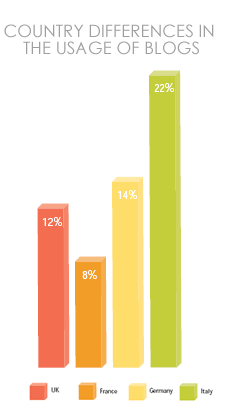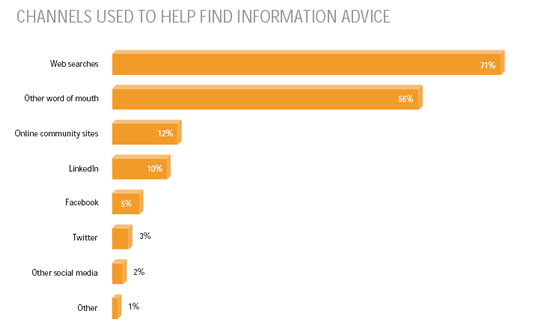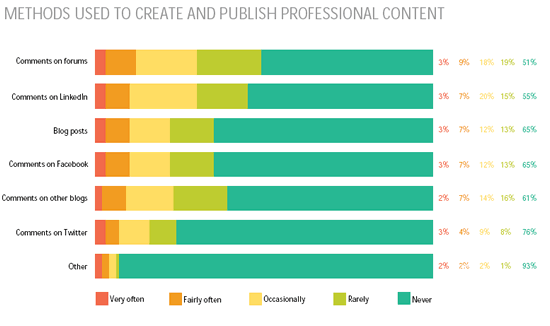Are you looking for proof that content marketing is the way to go in B2B marketing? You have it. There are many resources showing how important content is, how blogging reduces the cost per lead and why content marketing is an essential part of the marketing mix. However, there is just one solid way, besides actual demonstrated return, to make the case for content marketing: the behavior of the B2B buyer…
Base One, helped by B2B Marketing, Research Now and McCallum Layton just released the 2012 results of their annual Buyersphere survey, looking at changing B2B buyer behavior in four European markets.

It’s one of the rare surveys with a solid methodology. The report should be seen in its regional context: it covers the UK, France, Germany and Italy. Conclusions cannot be extrapolated to other European countries or to other continents. In the US, for instance, the use of blogs and content marketing in the B2B journey is more mature.
So, why is content marketing important for European B2B businesses and what changes do we notice although previous surveys clearly showed Europe is lagging behind in content marketing?
Searching on the Web is the main information channel for B2B buyers
87% of surveyed buyers look for advice before buying a product, service or solution. The first source when doing so: Web searches. With 71% of respondents who look for information, searches are by far the main source of information. Search and content are by definition very integrated.
The second most important source of information is word-of-mouth (WOM), outside social media. It would be nice to know how WOM is driven by the effects of content, even if it’s probably mainly a matter of experiences.
Drivers of change: the growing quest for content among B2B buyers
When comparing the results with those of last year’s report, Base One noticed a strong growth in the quest for content during the buying journey. The use of supplier websites and web searches has grown remarkably and there are more changes.
The authors are clear and leave no room for doubt: “The 2012 Report showed a distinct increase on the previous year in terms of the sheer amount of content sought by buyers in the course of the buying process…Buyers want content more than ever and they are increasingly likely to find you via a search engine“.

Interestingly enough, the importance of blogs as an information source declined although this could be partially explained by other factors. Nevertheless, the numbers are clear, although there are strong regional differences. France, for instance is far behind the other two countries regarding blogs while Italy clearly leads the pack.
The production of content and…comments by B2B buyers
B2B buyers are not only looking for content. They are increasingly creating professional content themselves. 27% create and publish it very or fairly often. The volume of content is highest in the form of comments: on forums, LinkedIn and finally blogs. Comments on Facebook and writing own blog posts are more or less comparable.
These comments enable B2B buyers to garner insights by listening into them and building relationships by participating.

The younger generations of B2B buyers and industry-specific content consumption patterns
Content formats such as whitepapers, business blogs or webinars are used more by people who have been in their current role less long and by younger respondents. The survey indeed also shows the rise of younger generations of B2B buyers who use social more intensively. Although social media is not doing very well (but that’s for another post), younger generations of decision makers are picking it up. They are the decision makers of tomorrow and influencers of the buying decision of today. Remember that B2B buying is a group process and social media in B2B (in general, the lines between B2B and B2C are vague and less important than the individual business and customer context) often involves several value chains.
Finally, note there are differences per industry. Particularly respondents who are working in IT were more likely to have downloaded whitepapers (36%) or read blogs (28%).
Check out the full research summary here (PDF opens).

